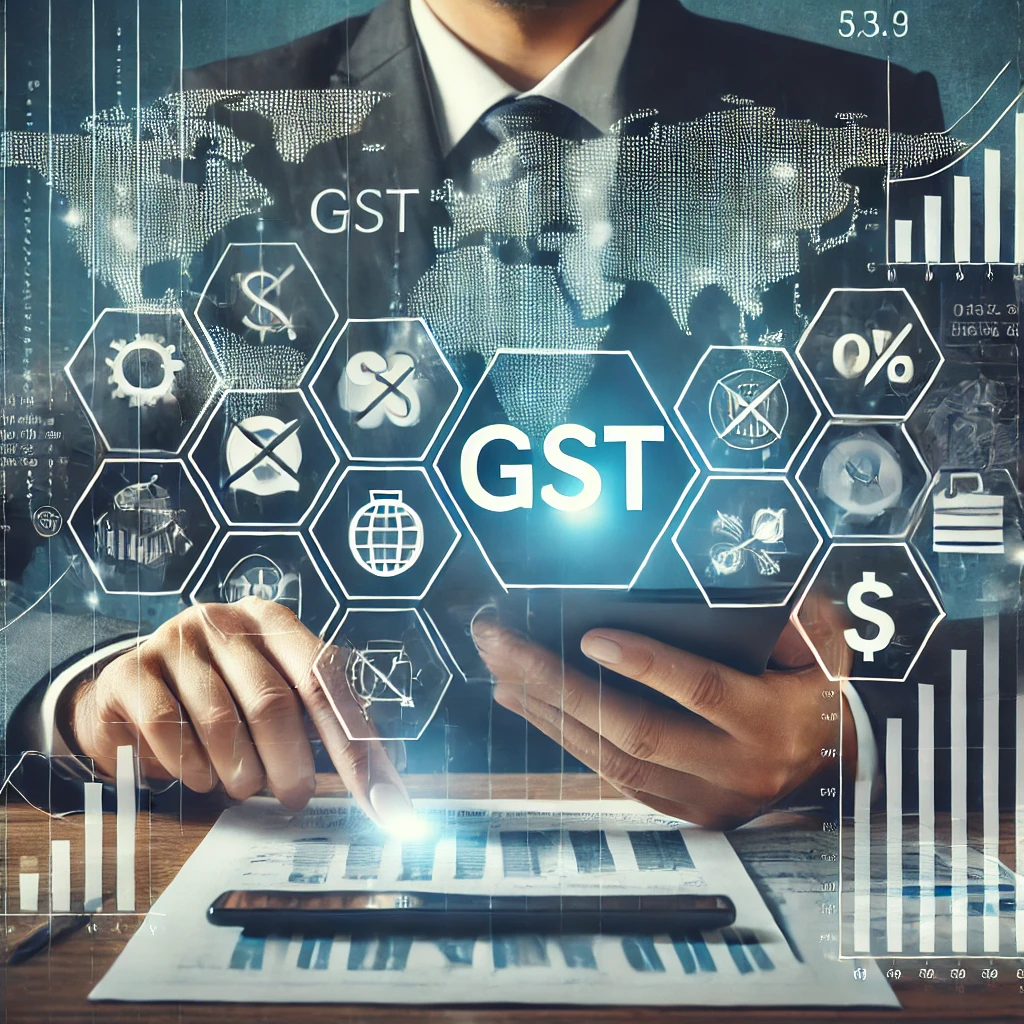Goods and Services Tax (GST) is a significant tax reform implemented in many countries to streamline the indirect taxation system. It replaces multiple indirect taxes such as VAT, excise duty, and service tax with a unified tax structure. GST is designed to eliminate the cascading effect of taxes, ensure transparency, and create a uniform tax system across the country. This guide provides an in-depth understanding of GST, including its structure, benefits, components, registration process, compliance, and impact on businesses and consumers.
Understanding GST
GST is a destination-based tax levied on the supply of goods and services. It is a comprehensive tax system that ensures tax is collected at every stage of the supply chain, but with the benefit of input tax credit. This means businesses can claim credit for the tax paid on purchases, thus reducing their overall tax liability.
GST is categorized into three major types:
- Central GST (CGST): Collected by the central government on intra-state supplies.
- State GST (SGST): Collected by state governments on intra-state supplies.
- Integrated GST (IGST): Collected by the central government on inter-state supplies and imports.
Benefits of GST
Elimination of Tax Cascading
Before GST, multiple taxes were levied at different stages, leading to a tax-on-tax effect. GST eliminates this cascading effect by allowing input tax credit at every stage of the supply chain.
Simplified Taxation
Earlier, businesses had to comply with various tax laws at state and central levels. GST has replaced numerous taxes with a single framework, simplifying compliance and reducing paperwork.
Increased Transparency
GST is technology-driven, with an online registration, return filing, and compliance system. This ensures transparency and minimizes tax evasion.
Boost to the Economy
With a uniform tax structure, businesses face fewer tax-related hurdles, promoting ease of doing business and contributing to economic growth.
Components of GST
Tax Slabs
GST is levied at multiple rates depending on the nature of goods and services. Common slabs include 5%, 12%, 18%, and 28%, with some essential goods either exempt or taxed at lower rates.
Input Tax Credit (ITC)
One of the critical features of GST, ITC allows businesses to claim credit for the tax paid on purchases, reducing their final tax liability.
Reverse Charge Mechanism (RCM)
Under RCM, the liability to pay tax shifts from the seller to the buyer in specific cases, mainly applicable to transactions with unregistered dealers.
GST Registration Process
Businesses meeting the prescribed turnover threshold must register for GST. The steps involved in GST registration include:
- Visiting the GST portal (government website).
- Filling out the application form with business details.
- Submitting required documents such as PAN, Aadhaar, business registration proof, and bank details.
- Verification by tax authorities and issuance of GST Identification Number (GSTIN).
GST Compliance and Filing
Registered businesses must comply with GST regulations, including timely return filing and tax payment. Common GST returns include:
- GSTR-1: Details of outward supplies (sales).
- GSTR-3B: Summary of sales, purchases, and tax payments.
- GSTR-9: Annual return summarizing transactions for the financial year.
Non-compliance with GST regulations may lead to penalties and legal actions.
Impact of GST on Businesses
Small and Medium Enterprises (SMEs)
While GST has simplified taxation, compliance requirements may be challenging for small businesses. However, the Composition Scheme offers relief by allowing SMEs to pay a fixed tax rate with reduced compliance obligations.
Large Corporations
For larger businesses, GST has brought efficiency in tax management, reduced logistics costs, and ensured uniform pricing across states.
Startups and E-commerce
E-commerce businesses benefit from GST as it standardizes tax treatment across states, but they must comply with the mandatory registration requirement irrespective of turnover.
Impact of GST on Consumers
GST affects the pricing of goods and services. Essential items may be taxed lower, while luxury and sin goods attract higher tax rates. The elimination of multiple taxes has generally led to reduced prices for many products, benefiting consumers.
Challenges in GST Implementation
Compliance Burden
Despite its advantages, GST compliance remains a challenge, especially for small businesses unfamiliar with digital tax filing.
Frequent Policy Changes
Frequent amendments to GST rules create confusion among businesses, requiring continuous adaptation and updates.
Technical Issues
The online GST portal has faced issues such as slow processing and system crashes, causing inconvenience to taxpayers.
Future of GST
To further simplify GST, authorities are working on reducing tax slabs, improving IT infrastructure, and easing compliance for small businesses. Continuous reforms aim to make GST more business-friendly and efficient.
Conclusion
GST has revolutionized the indirect taxation system by bringing uniformity, transparency, and efficiency. While challenges exist, ongoing improvements and technological advancements are expected to make GST an even more effective tax system. Understanding its components, compliance requirements, and benefits helps businesses and consumers navigate the GST regime efficiently.
Disclaimer:The content provided in this blog post is for informational purposes only. The opinions expressed here are those of the author and do not necessarily reflect the views or opinions of Business Rahi. While we strive to ensure the accuracy and reliability of the information presented, we cannot guarantee the completeness, reliability, or suitability of the content for any particular purpose. Any reliance you place on such information is strictly at your own risk.
Buisiness Rahi is not responsible for any losses or damages arising from the use of the information shared in this blog post. We may feature links to external websites, but these do not constitute endorsements or recommendations. We encourage readers to conduct their own research and consult with professionals before making any business decisions.
For more information about our brand or policies, please refer to our official website or contact us directly.

